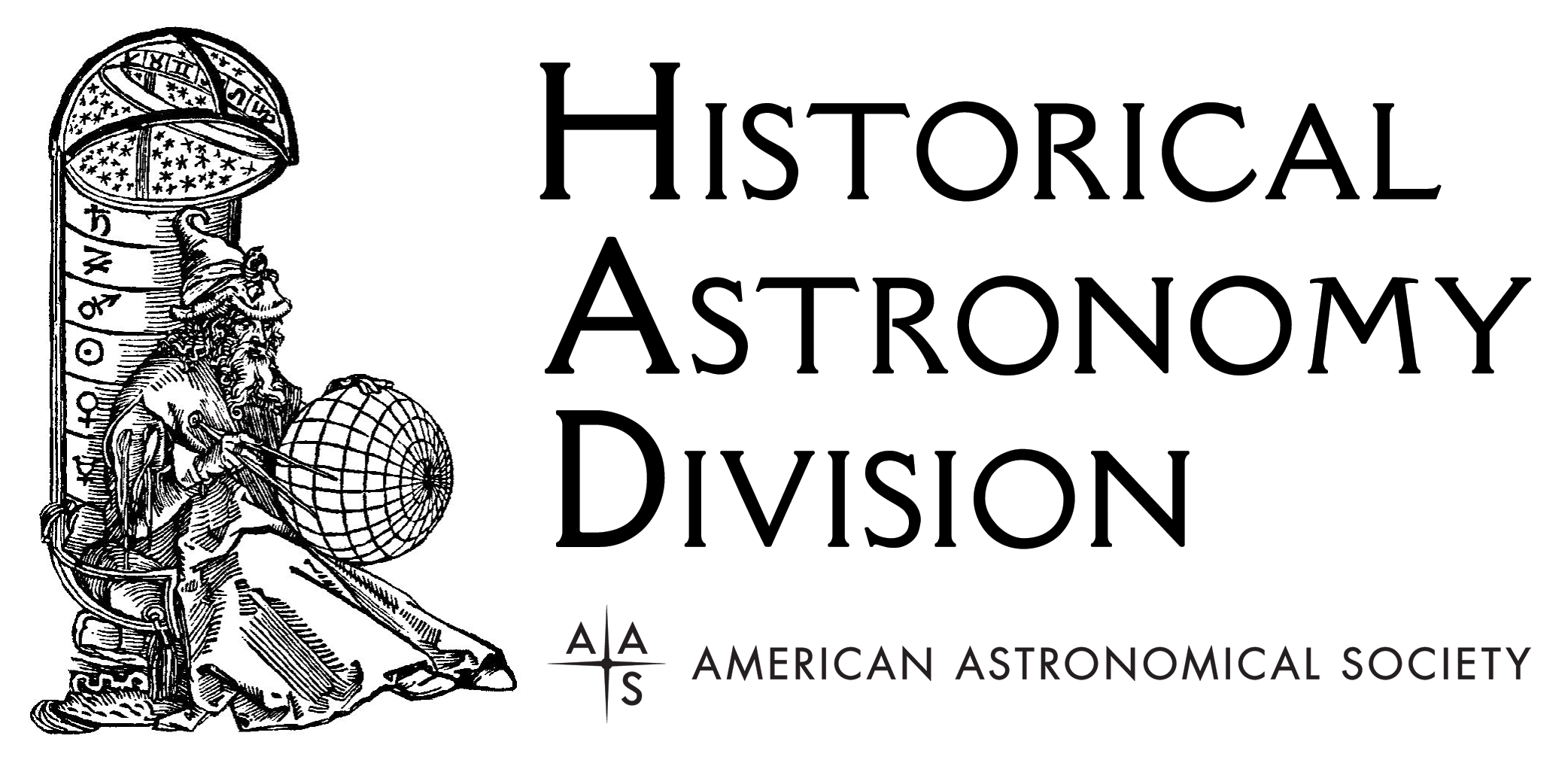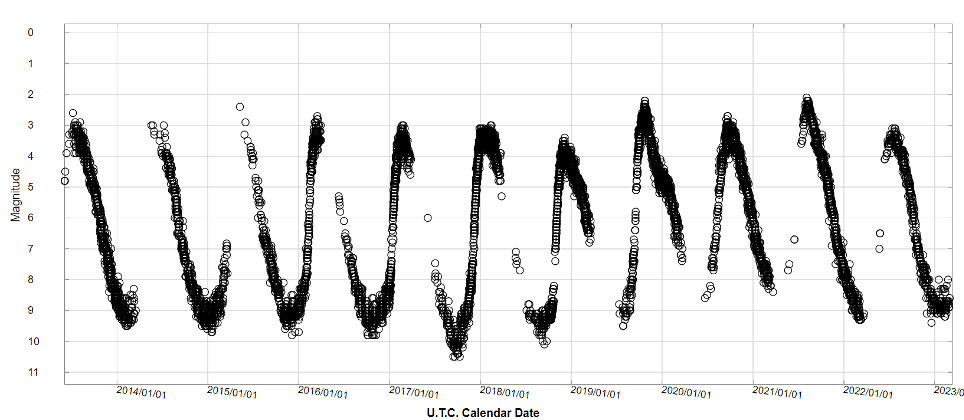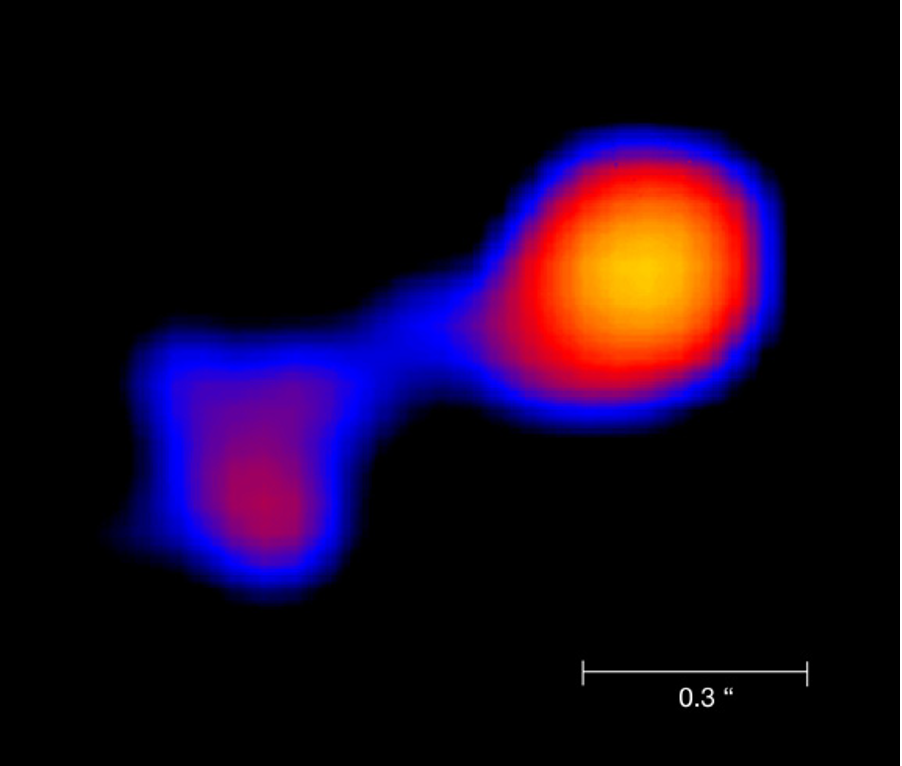This Month in Astronomical History: August 2023
Kristine Larsen Central Connecticut State University
 Each month as part of this series from the AAS Historical Astronomy Division (HAD), an important discovery or memorable event in the history of astronomy will be highlighted. This month, Kristine Larsen writes about the variable star Mira Ceti. Interested in writing a short (500-word) column? Instructions along with previous history columns are available on the HAD web page.
Each month as part of this series from the AAS Historical Astronomy Division (HAD), an important discovery or memorable event in the history of astronomy will be highlighted. This month, Kristine Larsen writes about the variable star Mira Ceti. Interested in writing a short (500-word) column? Instructions along with previous history columns are available on the HAD web page.
Mira Reveals Itself to David Fabricius
On 3 August 1596 amateur astronomer and minister David Fabricius (1564-1617) was determining the position of a planet relative to the stars. Imagine his surprise when one of his comparison stars changed brightness over the next three weeks, eventually brightening by a full magnitude to magnitude 2 on 21 August before fading from sight by October. Fabricius was again caught aware when his presumed “nova” unexpectedly reappeared on 15 February 1609, suggesting it was an altogether different type of object, the first confirmed periodically variable star. Friedrich Argelander later suggested that Fabricius had been wrong in his identification of the planet (he was probably viewing Jupiter instead of Mercury); however, Fabricius — a native of Friesland, the Netherlands — nonetheless secured his place in astronomical history through his less-than-stable comparison star.1
Designated omicron Ceti by Johann Beyer in 1603, this mysterious variable was largely ignored by astronomers until fellow Frieslander Johann Fokkens Holwarda (1618-1651) determined its period to be approximately 11 months. Johannes Hevelius (1611-1687) also observed the star and named it Mira, “The Wonderful,” in 1642.1 Mira is the prototype for a class of stars with periods between 150 to 400 days. These stars also change by at least 2.5 magnitudes in visible light. Mira itself fluctuates between 2 and 10.1 in magnitude with an average period of 331.96 days.2 It should be noted that both the amplitude and period are statistical ranges rather than absolutes. Cycle-to-cycle variations and large amplitudes make Miras the darlings of many visual observers.3 Mira itself is part of the American Association of Variable Star Observers’ Binocular, Long Period Variable, and Legacy Long Period Variable Observing Programs.4
Mira is nearing the end of its life. As an asymptotic giant branch star, Mira has already completed fusing hydrogen into helium in its core, expanded to form a red giant, fused helium into carbon in its core, and is now a red giant for the second time. If placed in the Sun’s position it would devour the inner solar system, although the atmosphere outside of the denser core is ethereal. John Percy colorfully noted that “if the core of a Mira was represented by a grape, the atmosphere of Mira would fill a large sports arena!”5
Like many stars, Mira is part of a binary system, its companion, Mira B, is generally thought to be a white dwarf surrounded by an accretion disk.6 This model is supported by a bridge of material connecting the two, visible in ultraviolet, infrared, and x-ray wavelengths.7 The pair is located about 350 light years from Earth and orbit each other once every five centuries. A further surprise was revealed by GALEX UV images, a train of material stretching 13 light years behind the system.8
Mira’s current stage of life is relatively brief, astronomically speaking, as it will eventually shed its outer layers into space, creating a ghostly apparition of gas and dust called a planetary nebula, leaving its core to collapse into a white dwarf similar to its companion. Fabricius himself came to a far more violent end. During one of his sermons, he denounced a local farmer as a goose thief, and on 7 May 1617, while out on his evening walk, he was accosted by that farmer and was bludgeoned to death with a spade.9, 10

Fig. 1: Ten years of AAVSO visual data for Mira (19 March 2013 – 19 March 2023). Graph by author using AAVSO Light Curve Generator (https://www.aavso.org/LCGv2/)

Fig. 2: Chandra x-ray image of Mira A (right) and B (left) with the connecting gas bridge. NASA/CXC/SAO/M. Karovska et al.

Fig. 3: GALEX UV image of Mira’s “tail.” NASA/JPL-Caltech/C. Martin (Caltech)/M. Seibert(OCIW)
References
- Hoffleit, D. (1997). “History of the Discovery of Mira Stars,” Journal of the American Association of Variable Star Observers, 25, 115-36.
- https://www.aavso.org/vsx/index.php?view=detail.top&oid=9237 (originally accessed 19 March 2023)
- Percy, J. R. (2007). Understanding Variable Stars. Cambridge UP.
- https://www.aavso.org/lpv-section-file-downloads (originally accessed 19 March 2023)
- Percy 2007, 215.
- Karovska, M., W. Hack, J. Raymond, & E. Guinan (1997). “First Hubble Space Telescope Observations of Mira AB Wind-Accreting Binary System,” Astrophysical Journal, 482, L175-L178, https://iopscience.iop.org/article/10.1086/310704/pdf
- Nhung, P. T., D. T. Hoai, P. Tuan-Anh et al. (2022). “Mira Ceti, Atypical Archetype,” Astrophysical Journal, 927, 169 (16 pp) https://doi.org/10.3847/1538-4357/ac4f61
- https://www.nasa.gov/mission_pages/galex/20070815/c.html (originally accessed 19 March 2023).
- Teitz, T. (2019). “David Fabricius and the Wonders of the Heavens,” SciHi Blog, http://scihi.org/david-fabricius/ (originally accessed 19 March 2023).
- Christianson, J. R. (2003). On Tycho’s Island: Tycho Brahe, Science, and Culture in the Sixteenth Century. Cambridge UP.

